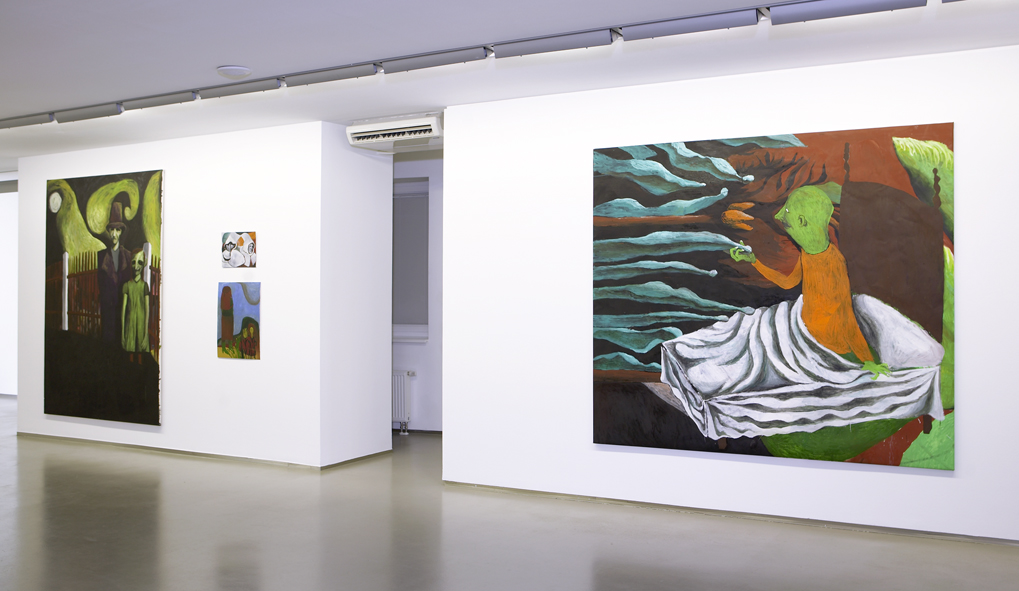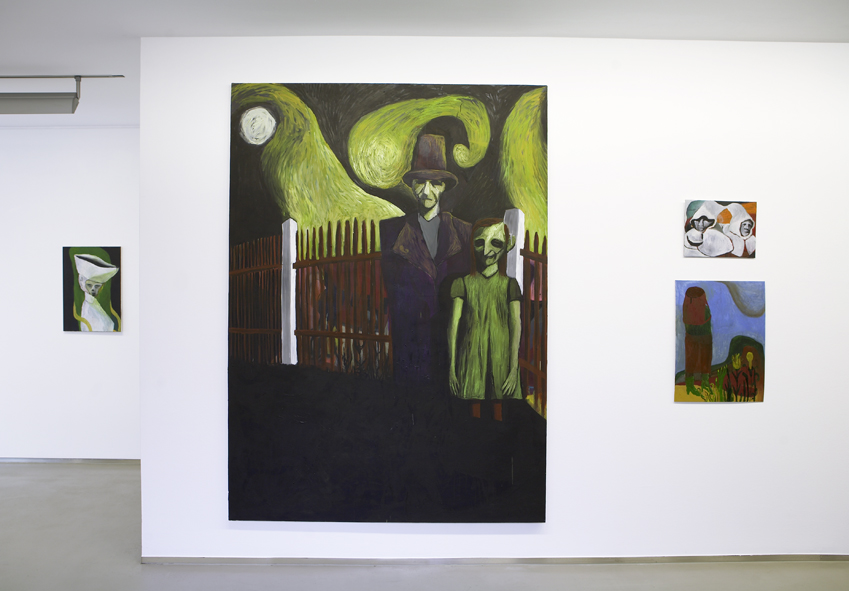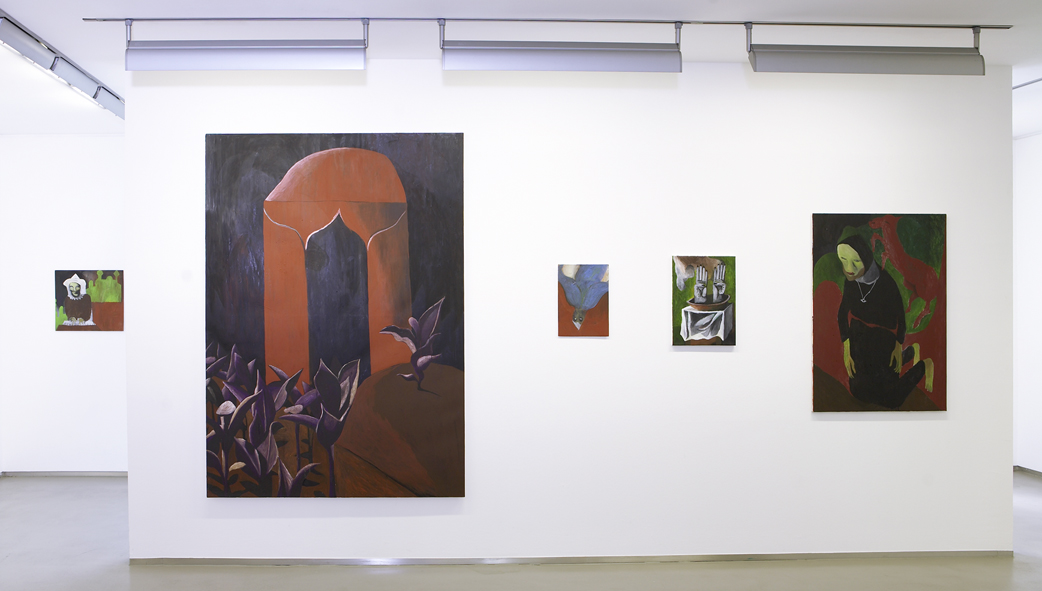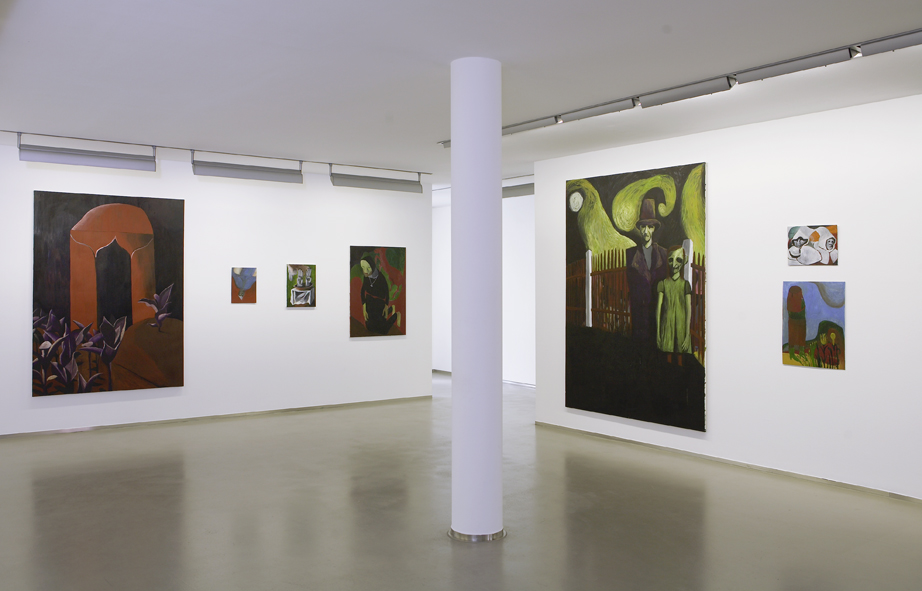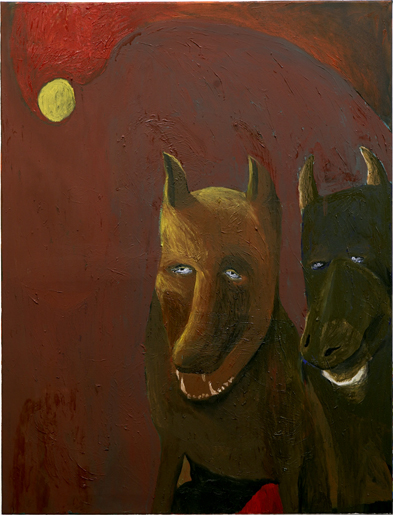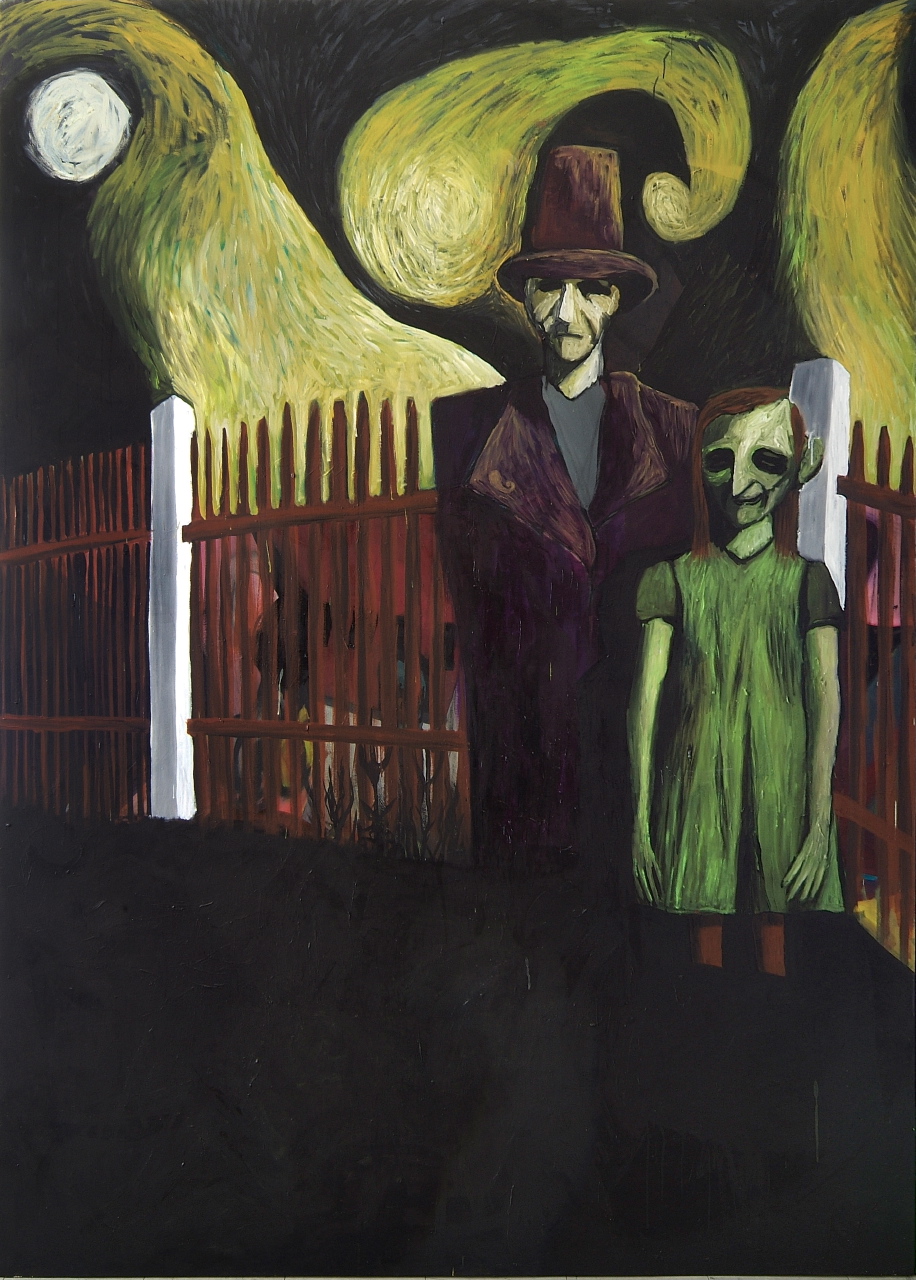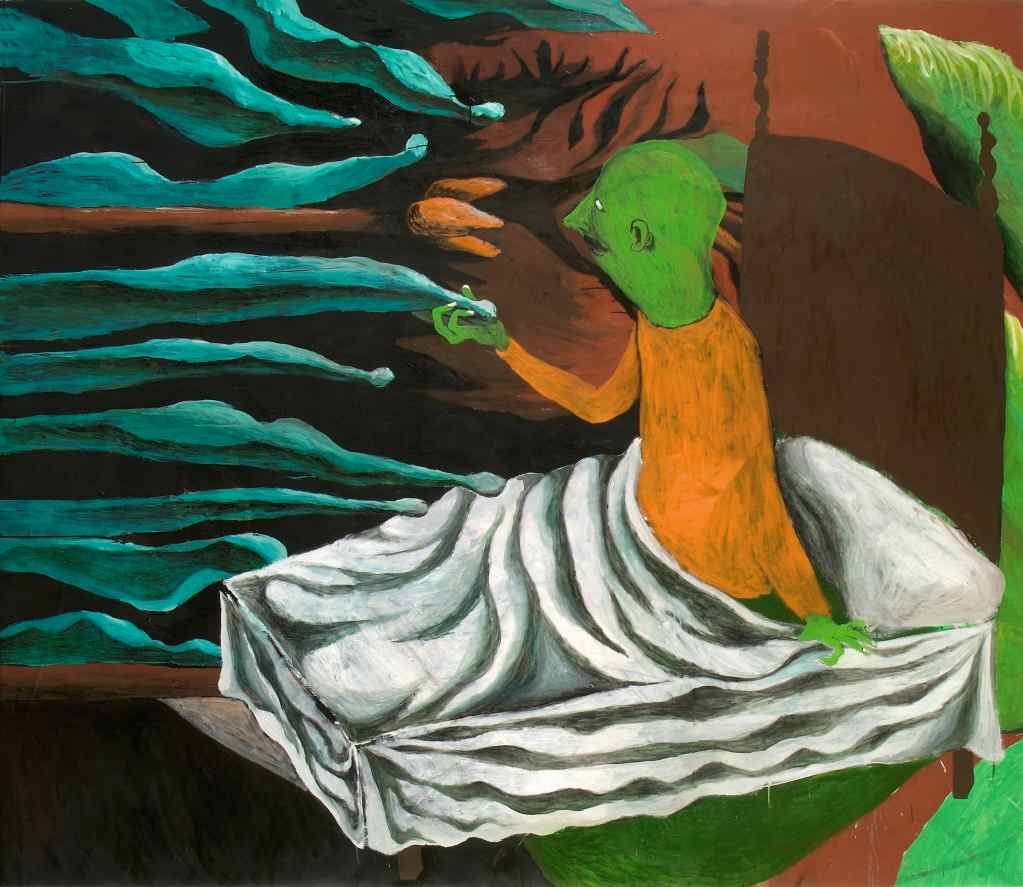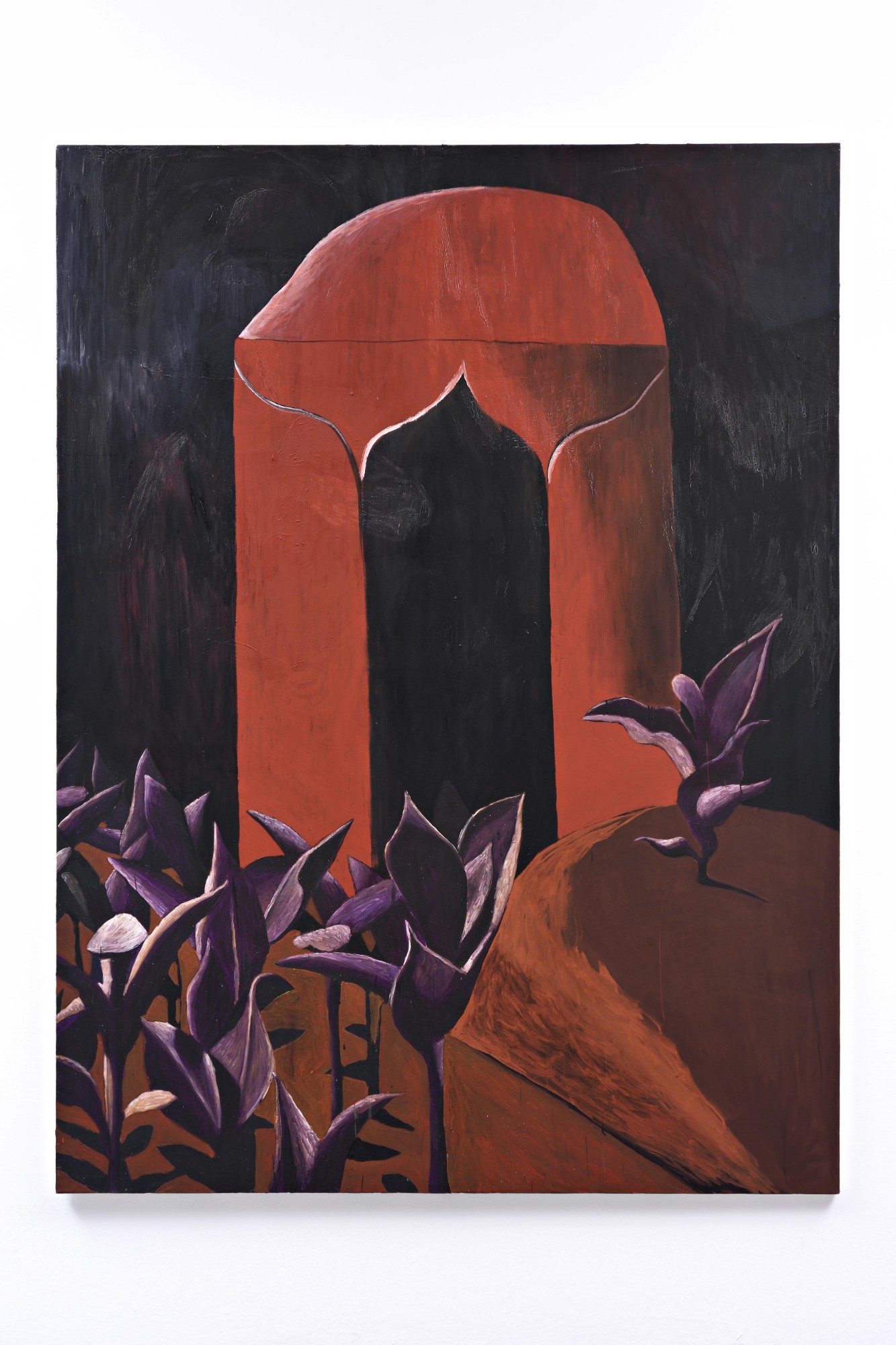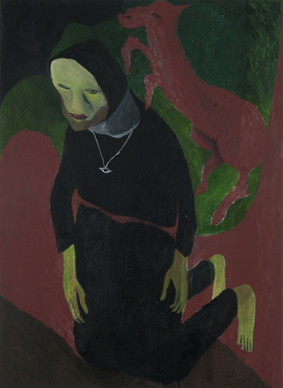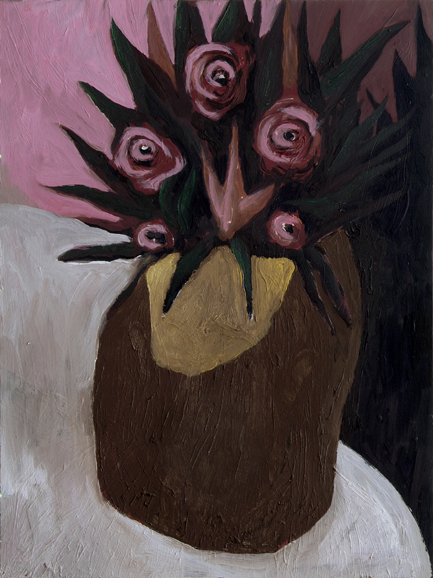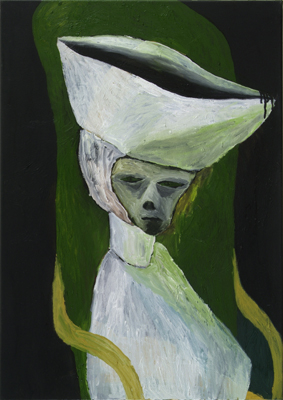René Luckhardt
|
Please scroll down for the German version Press release Why in the world are the pictures from René Luckhardt so familiar to us? Ribs, knolls, valleys, plains. An almost topographic landscape of oil paint on a canvas forms the background for the last layer of paint which holds out what appears to be creature-like beings towards the observer. They seem to grow from the ground like plants from the earth. The earthy concreteness of the pictures from René Luckhardt goes hand in hand with the fantastic element of the figures and the fantastic logic which combines them with their environment. The observer does not see any realistic images. But still they appear to be old acquaintances. Acquaintances who correspond with an inner reality. Perhaps acquaintances from dreams who approach an experienceable presence like encounters when awake during the day. What kind of thinking space do René Luckhardt’s pictures open up? Not realistic ones but still imaginable, horrible and still full of confident implicitness. That's what’s special about them. Here no judgment is made. This is the way it should be or this is the way it should not be. No social anathema should apply. It is stated, nothing more. Memories of expressionistic idioms are awaken but still don't apply. Because here no reinforcement of what is portrayed takes place through the portrayal. Is it more of a freeing of mental states through their expression? The reference to this life through the physical materiality of the pictures themselves, their presence, virtually connects possibilities for the imagination, inner and outer. And this provokes a reinforcement of the feeling of the present. That which in the best case can happen when observing pictures. Rational superior order, elevation is not René Luckhardt’s thing, rather the insight into an organic larger whole to which then of course also our spiritual world would belong. Perhaps it is these connections which cause the pictures from René Luckhardt to seem to be so familiar to the observer. Axel Jablonski Pressetext Warum nur kommen uns die Bilder von René Luckhardt so vertraut vor? Rippen, Kuppen, Täler, Ebenen: Eine geradezu topografische Landschaft aus Ölfarbe auf Leinwand bildet den Untergrund für eine letzte Schicht Farbauftrag, die dem Betrachter kreatürliche Erscheinungen entgegenstreckt. Sie sind gleichsam dem Untergrund entwachsen wie Pflanzen der Erde. „Asche zu Asche, Staub zu Staub“. Dieser Satz aus der Beerdigungsliturgie soll die körperhafte Einheit von Mensch und Natur/Erde versinnbildlichen und die kurze Zeit seines Wandelns auf der Erde. René Luckhardt geht noch einen Schritt weiter: Seine Kreaturen sind nie ohne ihre Umgebung und ihren Untergrund zu denken, sie sind mit ihrer Umgebung und ihrem Untergrund geradezu bedingungslos verwachsen. Einher mit der erdigen Gegenständlichkeit der Bilder von René Luckhardt, geht die Phantastik der Figuren und die phantastische Logik, die sie mit ihrer Umgebung verbindet. Es sind keine realistischen Abbildungen, die der Betrachter sieht. Und doch erscheinen sie wie alte Bekannte. Bekannte, die einer inneren Wirklichkeit entsprechen: Vielleicht Traumbekannte, denen eine ebenso erlebbare Gegenwärtigkeit zukommt, wie den wachen Begegnungen während des Tages auch. So sehen wir etwa eine menschliche Figur im Bett aufrecht sitzend (Katalog S. 18/19). Sie greift mit ihrer rechten Hand zärtlich nach pflanzlichen Blättern, die sich ihr entgegenstrecken und erscheint dabei selbst chamäleonartig grün. Die linke Hand greift, als ob sie sich verwurzeln wollte, nach dem Bettlaken. Versichert sich da jemand seiner selbst und wird dabei selbst zur Pflanze? Auf einem anderen Bild präsentiert uns jemand sein Kind in liebevoller Zuwendung (Katalog S. 8). Es mag vordergründig noch so schrecklich erscheinen, es ist glaubhaft. Was sind das für Denkräume, die René Luckhardts Bilder aufmachen? Keine realistischen und doch vorstellbare, schreckliche und doch solche voller zuversichtlicher Selbstverständlichkeit. Das ist die Besonderheit. Hier wird kein Urteil gefällt: So sollte es sein oder so sollte es nicht sein. Kein gesellschaftlicher Bannstrahl soll da treffen. Es wird konstatiert, mehr nicht. Erinnerungen an expressionistische Ausdruckweisen werden wach und treffen doch nicht zu. Denn hier findet keine Verstärkung des Darzustellenden durch Darstellung statt. Ist es eher Freimachung von Geisteszuständen durch deren Ausdruck? Der Verweis durch die körperhafte Materialität der Bilder selbst, ihre Präsenz, auf das Diesseits verbindet geradezu Vorstellungsmöglichkeiten, innere und äußere. Und dies provoziert eine Verstärkung des Gegenwärtigkeitsgefühls. Das, was bestenfalls passieren kann bei der Betrachtung von Bildern. Rationale Überordnung, Abgehobenheit ist René Luckhardts Sache nicht, eher die Einsicht eines organischen größeren Ganzen, zu dem dann freilich auch noch unsere Geisteswelt gehören würde. Vielleicht sind es diese Zusammenhänge, die dem Betrachter die Bilder von René Luckhardt so vertraut vorkommen lassen. Axel Jablonski |
